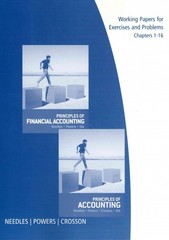Question
Dave Dobes is a sole proprietor running an advertising agency with two employees, Cindy and Carol. Dave decides to relocate his business from New Wilmington
Dave Dobes
is a sole proprietor running an advertising agency with two employees, Cindy and Carol. Dave decides to relocate his business from New Wilmington to Ellwood City, and Cindy and Carol agree to relocate as well. All three decide to move their families to Ellwood City. Dave agreed to reimburse Cindy and Carol for their moving expenses.
(a) Carols old residence was 13 miles from the old job location, and the new job location is 61 miles from her old residence. Once in Ellwood City, Carol works full-time for the next 2 years. What are the federal income tax consequences for Carol and Dave regarding the reimbursement of Carol's moving expenses?
(b) Cindy's old residence was 8 miles from the old job location, and the new job location is 60 miles from her old residence. Once in Ellwood City, Cindy works full-time for the first 52 weeks, but she works only part-time after that. What are the federal income tax consequences for Cindy and Dave regarding the reimbursement of Cindy's moving expenses?
(c) Dave's old residence was 10 miles from the old job location, and the new job location is 75 miles from his old residence. Once in Ellwood City, Dave works full-time for the next 52 weeks; however, he only works full-time 20 of the following 52 weeks. What are the federal income tax consequences to Dave regarding his qualified moving expenses?
Michael and Mary Mason sold their house for $380,000 in November of 2016. They had purchased the residence in 2002 for $75,000. They made major capital improvements during their 10-year ownership totaling $25,000. What is their excluded gain? How much must they recognize? Suppose, instead, that the Masons sold their home for $720,000. They moved into a smaller house costing $220,000. What is their excluded gain? How much must they recognize?
Sara Inc. is a calendar-year S corporation with four shareholders who each own 25 shares of stock. All shareholders purchased their stock for $5,000. Mr. D, one of the shareholders, made loans to the corporation of $7,000 and $6,000 on August 1, 2015, and June 15, 2016, respectively. Mr. D also guaranteed Saras $20,000 bank loan of $20,000. Sara Inc. had $9,000 ordinary income on December 31, 2015. Both shareholders reported their share of the corporation's income on their individual returns for 2015. For 2016, Sara Inc. reported an ordinary loss of $5,000. No distributions were made in 2015 or 2016 by the corporation. What is the adjusted basis of Mr. D's stock on December 31, 2016? If an item does not contribute to basis, please explain.
Step by Step Solution
There are 3 Steps involved in it
Step: 1

Get Instant Access to Expert-Tailored Solutions
See step-by-step solutions with expert insights and AI powered tools for academic success
Step: 2

Step: 3

Ace Your Homework with AI
Get the answers you need in no time with our AI-driven, step-by-step assistance
Get Started


